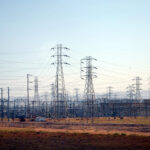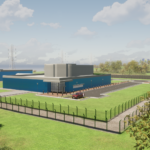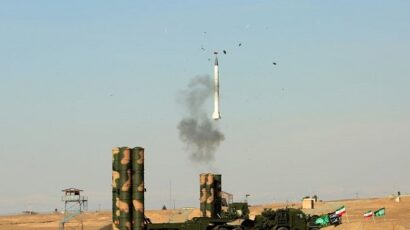The safety inadequacies of India’s fast breeder reactor
By Ashwin Kumar, M.V. Ramana | July 21, 2009
India’s Department of Atomic Energy (DAE) is planning a large expansion of nuclear power, in which fast breeder reactors play an important role. Fast breeder reactors are attractive to the DAE because they produce (or “breed”) more fissile material than they use. The breeder reactor is especially attractive in India, which hopes to develop a large domestic nuclear energy program even though it has primarily poor quality uranium ore that is expensive to mine.
Currently, only one fast reactor operates in the country–a small test reactor in Kalpakkam, a small township about 80 kilometers (almost 50 miles) south of Chennai. The construction of a larger prototype fast breeder reactor (PFBR) is underway at the same location. This reactor is expected to be completed in 2010 and will use mixed plutonium-uranium oxide as fuel in its core, with a blanket of depleted uranium oxide that will absorb neutrons and transmute into plutonium 239. Liquid sodium will be used to cool the core, which will produce 1,200 megawatts of thermal power and 500 megawatts of electricity. The reactor is to be the first of hundreds that the DAE envisions constructing throughout India by mid-century.
However, such an expansion of fast reactors, even if more modest than DAE projections, could adversely affect public health and safety. While all nuclear reactors are susceptible to catastrophic accidents, fast reactors pose a unique risk. In fast reactors, the core isn’t in its most reactive–or energy producing– configuration when operating normally. Therefore, an accident that rearranges the fuel in the core could lead to an increase in reaction rate and an increase in energy production. If this were to occur quickly, it could lead to a large, explosive energy release that might rupture the reactor vessel and disperse radioactive material into the environment.
Many of these reactors also have what is called a “positive coolant void coefficient,” which means that if the coolant in the central part of the core were to heat up and form bubbles of sodium vapor, the reactivity–a measure of the neutron balance within the core, which determines the reactor’s tendency to change its power level (if it is positive, the power level rises)–would increase; therefore core melting could accelerate during an accident. (A positive coolant void coefficient, though not involving sodium, contributed to the runaway reaction increase during the April 1986 Chernobyl reactor accident.) In contrast, conventional light water reactors typically have a “negative coolant void coefficient” so that a loss of coolant reduces the core’s reactivity. The existing Indian fast breeder test reactor, with its much smaller core, doesn’t have a positive coolant void coefficient. Thus, the DAE doesn’t have real-world experience in handling the safety challenges that a large prototype reactor will pose.
More largely, international experience shows that fast breeder reactors aren’t ready for commercial use. Superphénix, the flagship of the French breeder program, remained inoperative for the majority of its 11-year lifetime until it was finally shuttered in 1996. Concerns about the adequacy of the design of the German fast breeder reactor led to it being contested by environmental groups and the local state government in the 1980s and ultimately to its cancellation in 1991. And the Japanese fast reactor Monju shut down in 1995 after a sodium coolant leak caused a fire and has yet to restart. Only China and Russia are still developing fast breeders. China, however, has yet to operate one, and the Russian BN-600 fast reactor has suffered repeated sodium leaks and fires.
When it comes to India’s prototype fast breeder reactor, two distinct questions must be asked: (1) Is there confidence about how an accident would propagate inside the core and how much energy it might release?; and (2) have PFBR design efforts been as strict as necessary, given the possibility that an accident would be difficult to contain and potentially harmful to the surrounding population?
The simple answer to both is no.
The DAE, like other fast-reactor developers, has tried to study how severe a core-disruptive accident would be and how much energy it would release. In the case of the PFBR, the DAE has argued that the worst-case core disruptive accident would release an explosive energy of 100 megajoules. This is questionable.
The DAE’s estimate is much smaller when compared with other fast reactors, especially when the much larger power capacity of the PFBR–and thus, the larger amount of fissile material used in the reactor–is taken into account. For example, it was estimated that the smaller German reactor (designed to produce 760 megawatts of thermal energy) would produce 370 megajoules in the event of a core-disruptive accident–much higher than the PFBR estimate. Other fast reactors around the world have similarly higher estimates for how much energy would be produced in such accidents.
The DAE’s estimate is based on two main assumptions: (1) that only part of the core will melt down and contribute to the accident; and (2) that only about 1 percent of the thermal energy released during the accident would be converted into mechanical energy that can damage the containment building and cause ejection of radioactive materials into the atmosphere.
Neither of these assumptions is justifiable. Britain’s Atomic Energy Authority has done experiments that suggest up to 4 percent of the thermal energy could be converted into mechanical energy. And the phenomena that might occur inside the reactor core during a severe accident are very complex, so there’s no way to stage a full-scale experiment to compare with the theoretical accident models that the reactor’s designers used in their estimates. In addition, important omissions in the DAE’s own safety studies make their analysis inadequately conservative. (Our independent estimates of the energy produced in a hypothetical PFBR core disruptive accident are presented in the Science and Global Security article, “Compromising Safety: Design Choices and Severe Accident Possibilities in India’s Prototype Fast Breeder Reactor” and these are much higher than the DAE’s estimates.)
Turning to the second question: In terms of the stringency of the DAE’s design effort, the record reveals inadequate safety precautions. One goal of any “defense-in-depth” design is to engineer barriers to withstand the most severe accident that’s considered plausible. Important among these barriers is the reactor’s containment building, the most visible structure from the outside of any nuclear plant. Compared to most other breeder reactors, and light water reactors for that matter, the design of the PFBR’s containment is relatively weak and won’t be able to contain an accident that releases a large amount of energy. The DAE knows how to build stronger containments–its newest heavy water reactor design has a containment building that is meant to withstand six times more pressure than the PFBR’s containment–but has chosen not to do so for the PFBR.
The other unsafe design choice is that of the reactor core. As mentioned earlier, the destabilizing positive coolant void coefficient in fast reactors is a problem because it increases the possibility that reactivity will escalate inside the core during an accident. It’s possible to decrease this effect by designing the reactor core so that fuel subassemblies are interspersed within the depleted uranium blanket, in what is termed a heterogeneous core. The U.S. Clinch River Breeder Reactor, which was eventually cancelled, was designed with a heterogeneous core, and Russia has considered a heterogeneous core for its planned BN-1600 reactor. The DAE hasn’t made such an effort, and the person who directed India’s fast breeder program during part of the design phase once argued that the emphasis on the coolant void coefficient was mistaken because a negative void coefficient could lead to dangerous situations in an accident as well. That might be true, but it misses the obvious point that the same potentially dangerous situations would be even more dangerous if the void coefficient within the core is positive.
Both of these design choices–a weak containment building and a reactor core with a large and positive void coefficient–are readily explainable: They lowered costs. Reducing the sodium coolant void coefficient would have increased the fissile material requirement of the reactor by 30-50 percent–an expensive component of the initial costs. Likewise, a stronger containment building would have cost more. All of this is motivated by the DAE’s assessment that “the capital cost of [fast breeder reactors] will remain the most important hurdle” to their rapid deployment.
Lowered electricity costs would normally be most welcome, but not with the increased risk of catastrophic accidents caused by poorly designed fast breeder reactors.
Together, we make the world safer.
The Bulletin elevates expert voices above the noise. But as an independent nonprofit organization, our operations depend on the support of readers like you. Help us continue to deliver quality journalism that holds leaders accountable. Your support of our work at any level is important. In return, we promise our coverage will be understandable, influential, vigilant, solution-oriented, and fair-minded. Together we can make a difference.
Topics: Nuclear Energy, Opinion
















